
Hallstatt: The Enchanting Lakeside Gem of Austria
Discover Hallstatt, Austria's enchanting lakeside gem, where history, nature, and culture blend seamlessly to create a timeless travel experience.
Hallstatt, a picturesque village nestled between the serene Hallstätter See and the towering Dachstein Alps, is a destination that feels like a step back in time. This UNESCO World Heritage Site is renowned for its charming wooden houses, flower-lined balconies, and narrow winding streets. A stroll through the village reveals an array of quaint shops, traditional cafes, and historic landmarks, offering a glimpse into the rich cultural tapestry of this idyllic locale. The town is steeped in history, with its roots tracing back to prehistoric times due to its ancient salt mines. A visit to the Hallstatt Salt Mine, the oldest salt mine in the world, is a must. Here, you can explore subterranean tunnels and learn about the region's salt-mining heritage. The Hallstatt Skywalk, perched high above the village, provides breathtaking panoramic views of the lake and mountains, making it a perfect spot for photography enthusiasts. Nature lovers will find Hallstatt a paradise. The crystal-clear waters of Hallstätter See are perfect for boating, swimming, and fishing, while the surrounding mountains offer numerous hiking trails for all levels. In winter, the nearby Dachstein West ski area becomes a haven for skiers and snowboarders. Don't forget to visit the Dachstein Ice Caves, a spectacular natural wonder that captivates visitors with its stunning ice formations. Hallstatt's unique blend of natural beauty, historical significance, and cultural charm make it a must-visit destination for any traveler seeking an unforgettable experience in Austria.
Local tips in Hallstatt
- Visit early in the morning or late in the afternoon to avoid crowds, especially during peak tourist season.
- Take the boat tour on Hallstätter See for a unique perspective of the village and stunning lake views.
- Wear comfortable shoes as the village streets are cobbled and can be steep.
- Check the weather forecast and dress in layers, as temperatures can vary greatly between the lake and higher altitudes.
- Purchase tickets for the Salt Mine and Skywalk in advance to ensure availability and avoid long lines.
- Try local delicacies such as fresh fish from Hallstätter See and traditional Austrian pastries.
Hallstatt: The Enchanting Lakeside Gem of Austria
Hallstatt, a picturesque village nestled between the serene Hallstätter See and the towering Dachstein Alps, is a destination that feels like a step back in time. This UNESCO World Heritage Site is renowned for its charming wooden houses, flower-lined balconies, and narrow winding streets. A stroll through the village reveals an array of quaint shops, traditional cafes, and historic landmarks, offering a glimpse into the rich cultural tapestry of this idyllic locale. The town is steeped in history, with its roots tracing back to prehistoric times due to its ancient salt mines. A visit to the Hallstatt Salt Mine, the oldest salt mine in the world, is a must. Here, you can explore subterranean tunnels and learn about the region's salt-mining heritage. The Hallstatt Skywalk, perched high above the village, provides breathtaking panoramic views of the lake and mountains, making it a perfect spot for photography enthusiasts. Nature lovers will find Hallstatt a paradise. The crystal-clear waters of Hallstätter See are perfect for boating, swimming, and fishing, while the surrounding mountains offer numerous hiking trails for all levels. In winter, the nearby Dachstein West ski area becomes a haven for skiers and snowboarders. Don't forget to visit the Dachstein Ice Caves, a spectacular natural wonder that captivates visitors with its stunning ice formations. Hallstatt's unique blend of natural beauty, historical significance, and cultural charm make it a must-visit destination for any traveler seeking an unforgettable experience in Austria.
When is the best time to go to Hallstatt?
Iconic landmarks you can’t miss
Panoramic Viewpoint - Hallstatt
Experience the breathtaking beauty of Hallstatt from the Panoramic Viewpoint, where stunning alpine scenery meets charming village vistas.

Panoramic Viewpoint - Hallstatt Skywalk
Discover unparalleled views at the Hallstatt Skywalk, where the beauty of Austria's landscapes unfolds in breathtaking panoramas.
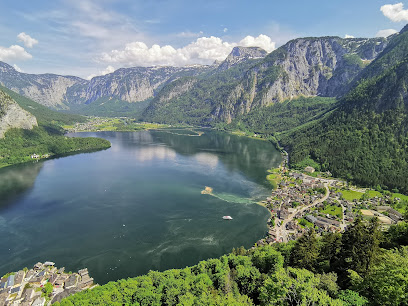
Salzwelten Hallstatt
Explore the ancient salt mines of Salzwelten Hallstatt, a UNESCO World Heritage site offering breathtaking views and rich history in the heart of Austria.
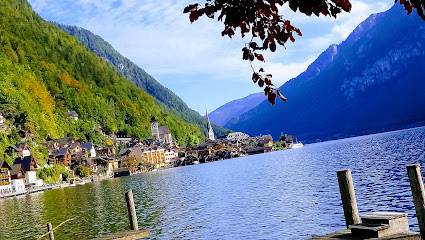
Hallstätter See
Discover the breathtaking beauty of Hallstätter See, Austria's stunning lake surrounded by majestic mountains and charming villages, perfect for adventure and relaxation.
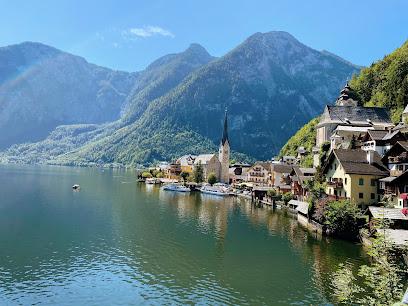
World Heritage Spiral (Welterbespirale)
Experience the breathtaking views and rich heritage of Obertraun at the World Heritage Spiral, a unique observation deck in Austria.
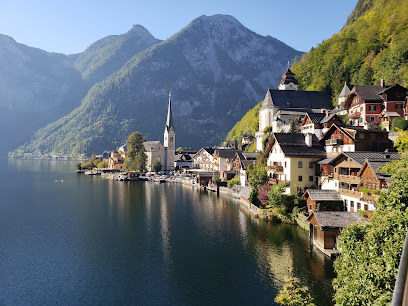
Rudolfsturm
Experience authentic Austrian cuisine at Rudolfsturm, where breathtaking views meet delightful flavors in the heart of Hallstatt.
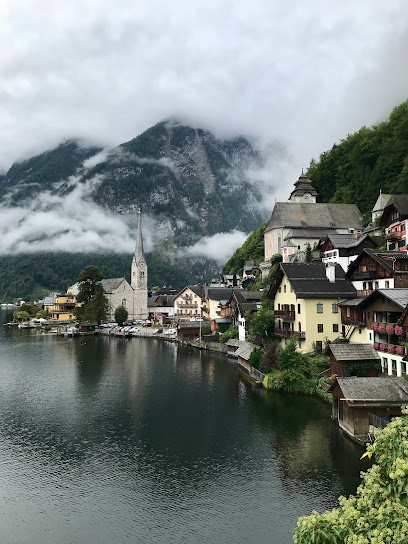
Evangelische Pfarrkirche Hallstatt
Discover the serene beauty and rich heritage of the Evangelische Pfarrkirche Hallstatt, a must-visit landmark in the enchanting village of Hallstatt, Austria.
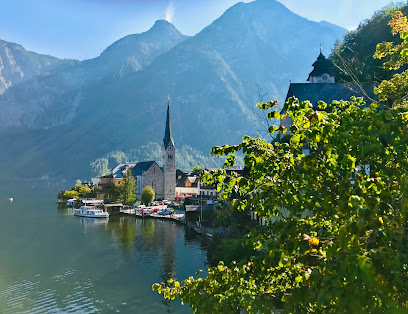
Marktplatz Hallstatt
Explore the charming Marktplatz Hallstatt, the vibrant heart of the village surrounded by stunning alpine views and rich cultural heritage.
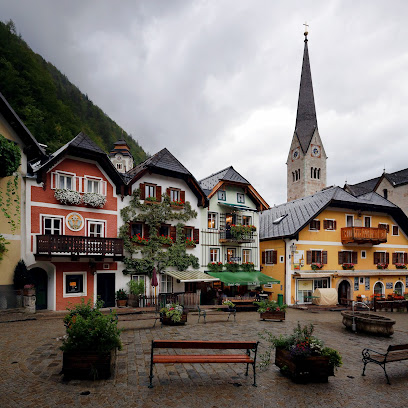
Pfarrkirche Mariä Himmelfahrt (Maria am Berg)
Explore the breathtaking Gothic architecture and serene ambiance of Pfarrkirche Mariä Himmelfahrt in Hallstatt, a must-see for every traveler.
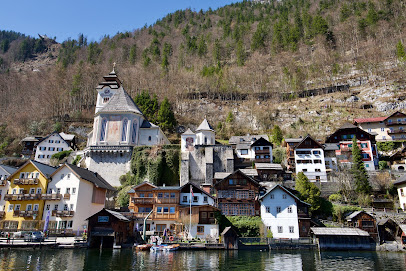
Salzbergbahn
Discover the breathtaking views of Lake Hallstatt and the Dachstein Alps aboard the Salzbergbahn, a must-visit mountain cable car in Austria.
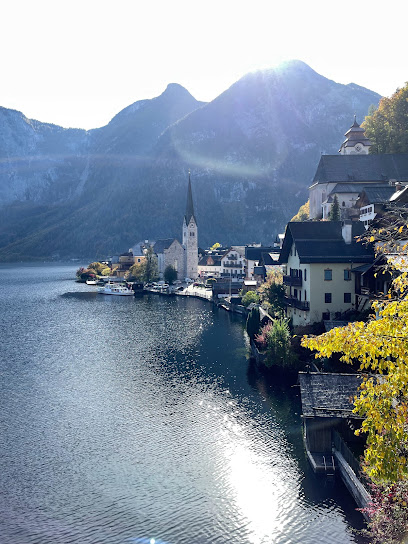
Tourism Office Hallstatt - Dachstein Salzkammergut
Explore the breathtaking beauty of Hallstatt with the Tourism Office, your gateway to adventure in the Dachstein Salzkammergut region.
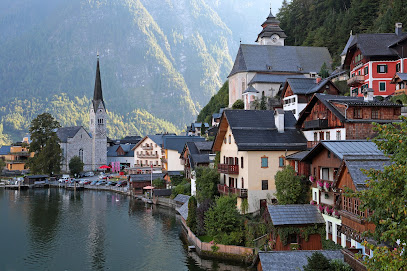
Hallstatt Skywalk - Hallstättersee
Experience breathtaking views at Hallstatt Skywalk, a scenic spot that offers unparalleled vistas of Hallstättersee and the majestic Dachstein mountains.
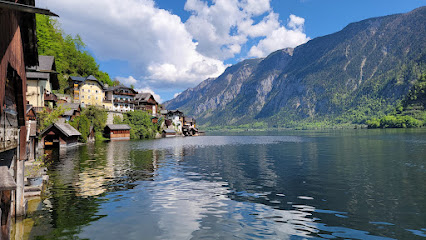
Welterbemuseum Hallstatt
Explore Hallstatt's rich history at the Welterbemuseum, a cultural gem showcasing the heritage of this UNESCO World Heritage Site.
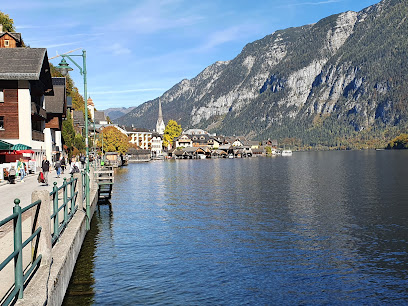
Mammut Cave
Discover the breathtaking Mammut Cave in Obertraun, a gem of the Dachstein Salzkammergut, where nature's artistry comes alive in stunning underground formations.
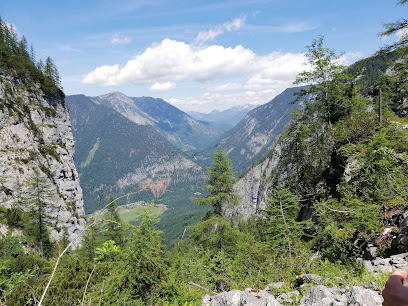
Hallstätter Wasserfall
Discover the breathtaking Hallstätter Wasserfall, a serene waterfall nestled in the heart of Hallstatt, surrounded by stunning alpine scenery.
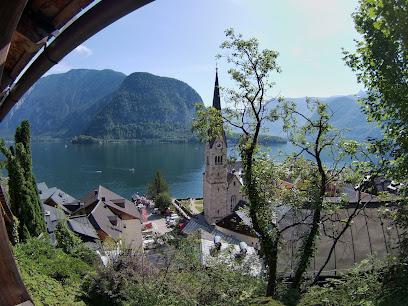
Unmissable attractions to see
Schloss Hellbrunn
Experience the charm of Salzburg at Schloss Hellbrunn, a magnificent castle with enchanting gardens and intriguing trick fountains.
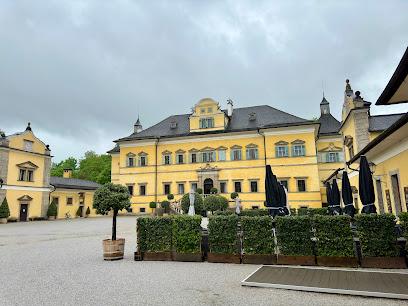
The Eagle's Nest
Explore The Eagle's Nest, a historic landmark in the Bavarian Alps, where breathtaking views and rich history intertwine for an unforgettable experience.
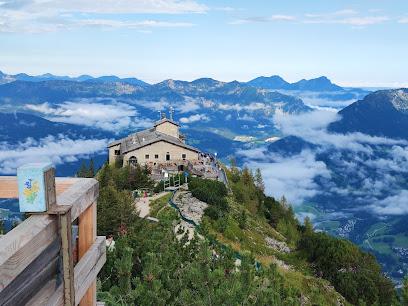
Panoramic Viewpoint - Hallstatt
Experience breathtaking views at the Panoramic Viewpoint in Hallstatt, where stunning landscapes and serene waters create unforgettable memories.
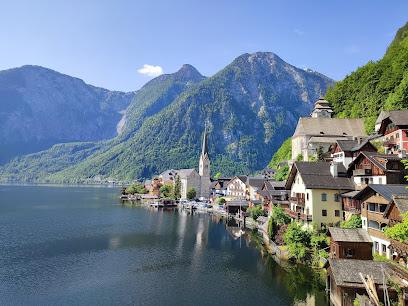
Salzburg Zoo Hellbrunn
Experience the captivating Salzburg Zoo Hellbrunn, home to diverse wildlife and beautiful gardens, perfect for families and nature lovers.

Burg Hohenwerfen
Explore the enchanting Burg Hohenwerfen, a medieval castle in the stunning Austrian Alps, rich in history and breathtaking views.
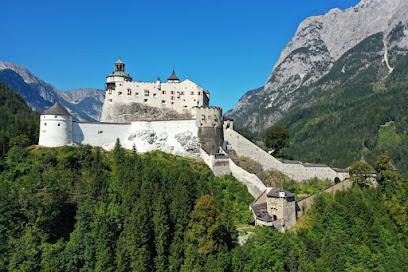
Eisriesenwelt
Explore the Eisriesenwelt in Austria, the world's largest ice cave, offering stunning natural beauty and breathtaking ice formations in a unique underground adventure.
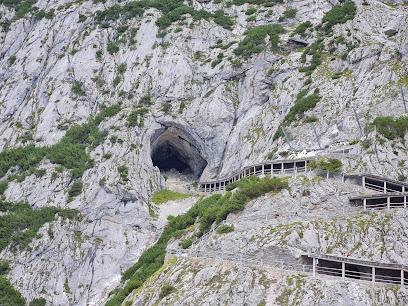
Panoramic Viewpoint - Hallstatt Skywalk
Discover breathtaking views at the Hallstatt Skywalk, where the peaks of the Dachstein mountains meet the serene waters of Hallstatter See.
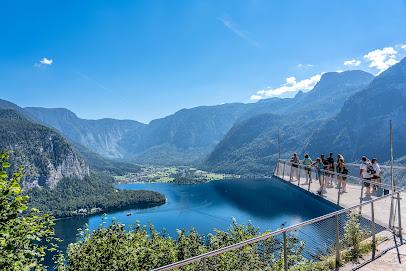
Rossfeld Panorama Strasse
Discover unparalleled views and majestic hiking trails at Rossfeld Panorama Strasse, a top attraction in the Bavarian Alps for nature enthusiasts.
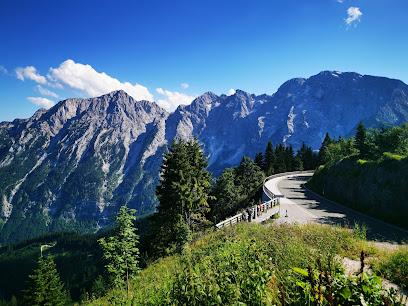
SchafbergBahn
Experience the breathtaking ascent of Schafberg Mountain aboard the historic SchafbergBahn cog railway in St. Wolfgang.
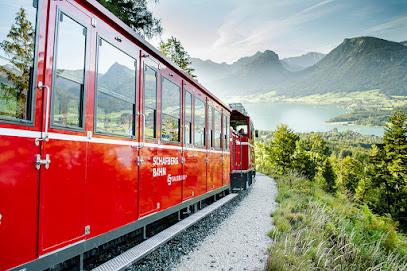
Gut Aiderbichl Henndorf
Discover Gut Aiderbichl Henndorf, a heartwarming animal sanctuary in Austria, dedicated to rescuing and protecting animals while educating visitors on animal welfare.
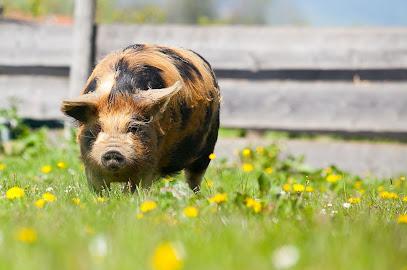
Salzwelten Hallstatt
Explore the ancient salt mines of Salzwelten Hallstatt, a UNESCO World Heritage site, and experience a journey through Austria's rich history and stunning landscapes.
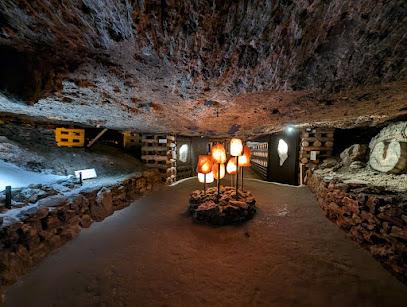
Dokumentationszentrum Obersalzberg
Uncover the historical significance of the Obersalzberg at the Dokumentationszentrum, a museum dedicated to World War II and its impact on the region.
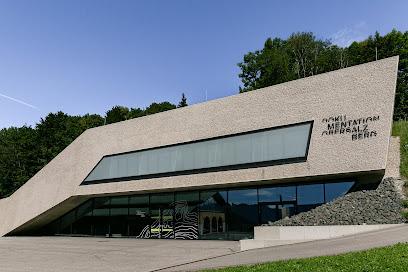
Treppe ins Nichts
Discover the breathtaking Treppe ins Nichts, an observation deck offering stunning views of the Dachstein Mountains and a thrilling experience for all visitors.
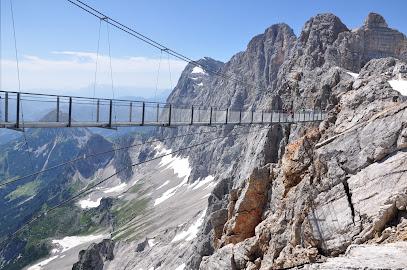
5 Fingers
Experience breathtaking views and thrilling adventures at 5 Fingers, the iconic observation deck in the heart of the Dachstein region.
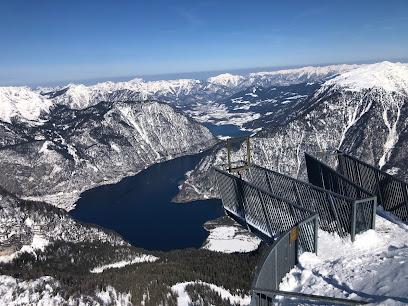
Gollinger Wasserfall
Discover the enchanting Gollinger Wasserfall, a stunning natural attraction in Austria, perfect for nature lovers and outdoor enthusiasts.
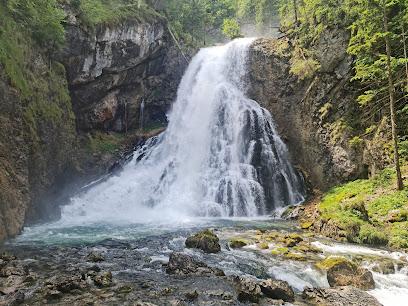
Essential places to dine
Welterbe-Wirtshaus Steegwirt
Experience authentic Austrian cuisine at Welterbe-Wirtshaus Steegwirt in Bad Goisern am Hallstättersee amidst breathtaking natural beauty.

Pizzeria Kegelbahn
Discover Pizzeria Kegelbahn in Obertraun - where authentic Italian pizza meets Austrian hospitality in a cozy setting.
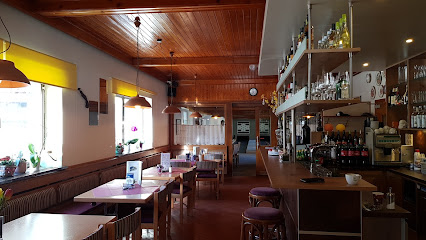
Seehotel Grüner Baum
Discover the charm of Seehotel Grüner Baum in Hallstatt - where stunning views meet exquisite dining and warm hospitality.

Bräugasthof
Discover Bräugasthof: An Authentic Austrian Restaurant Offering Traditional Dishes Amidst Hallstatt's Stunning Scenery.

Uferwirt Seeraunzn
Discover Uferwirt Seeraunzn: A delightful lakeside restaurant offering authentic Austrian cuisine amidst breathtaking natural beauty.
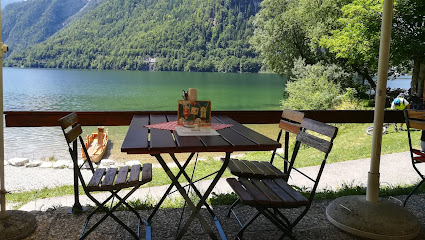
Pizzeria Bella Milano
Experience authentic Italian cuisine at Pizzeria Bella Milano in Hallstatt - where every bite transports you to Italy!
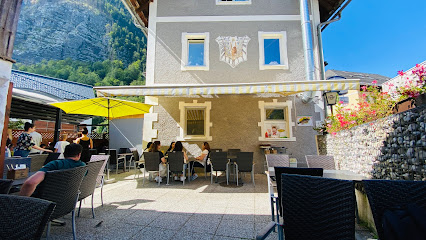
Rudolfsturm
Experience exquisite Austrian cuisine at Rudolfsturm while enjoying breathtaking views over Hallstatt and its stunning landscapes.
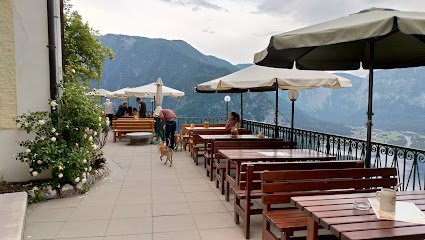
Gasthaus Koppenrast
Experience authentic Austrian cuisine at Gasthaus Koppenrast in Obertraun - a culinary gem surrounded by breathtaking landscapes.
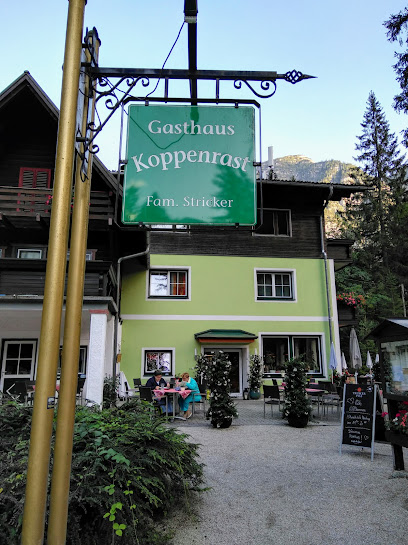
Schirmbar Hallstatt (Umbrella Bar Hallstatt)
Discover Schirmbar Hallstatt: A lakeside gem offering delicious local cuisine and breathtaking views in the heart of Austria's stunning landscape.
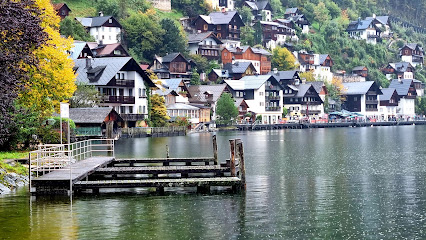
Karmez Kebap Cart
Discover authentic flavors at Karmez Kebap Cart in Hallstatt – where delicious kebabs meet stunning Alpine views.
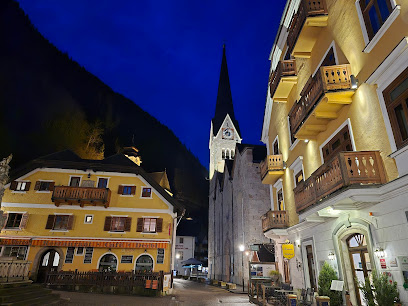
Seewirt - Zauner
Experience authentic Austrian cuisine at Seewirt - Zauner in Hallstatt, where local flavors meet breathtaking scenery.

Seecafé Obertraun
Discover culinary delights at Seecafé Obertraun with stunning lakeside views and access to outdoor adventures in Austria's breathtaking Dachstein region.
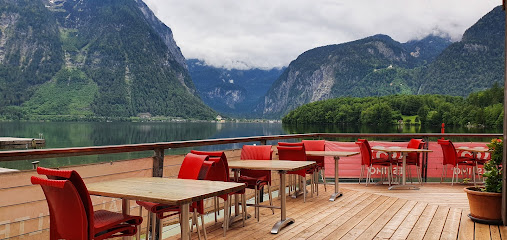
Burgerman The Station
Discover Burgerman The Station in Hallstatt - where delicious hamburgers meet breathtaking alpine views.
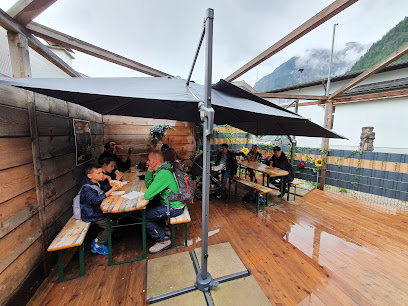
Pension Bergfried
Discover tranquility at Pension Bergfried in Hallstatt - where Austrian charm meets serene beauty amidst breathtaking alpine landscapes.

SIMPLE 169
Discover authentic Austrian flavors at SIMPLE 169 in Hallstatt – a perfect blend of convenience and culinary delight amidst stunning alpine scenery.
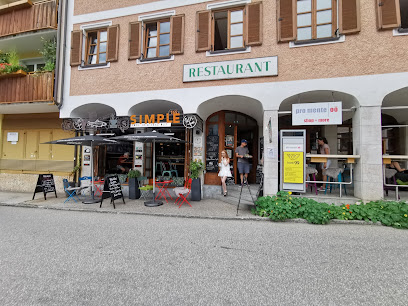
Markets, malls and hidden boutiques
Cafe Bäckerei Konditorei Maislinger
Discover the delightful flavors of Hallstatt at Café Bäckerei Konditorei Maislinger, where every pastry is a treat and every coffee tells a story.
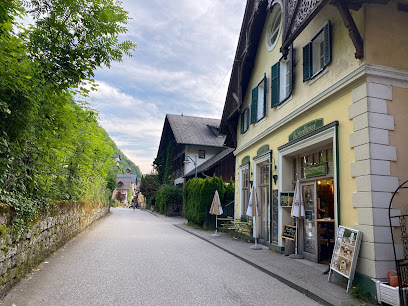
Marktplatz Hallstatt
Experience the vibrant charm of Marktplatz Hallstatt, a picturesque square surrounded by stunning mountains and rich cultural heritage.
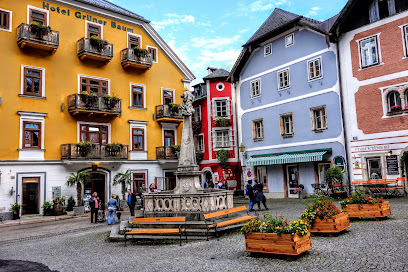
Café Derbl
Experience the charm of Hallstatt at Café Derbl, where delicious coffee and delightful pastries await amidst breathtaking alpine scenery.
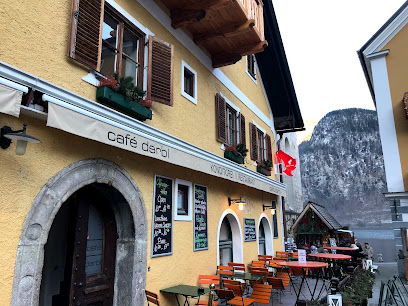
Supermarket Obertraun
Discover local flavors at Supermarket Obertraun, your go-to grocery store in the heart of Obertraun, Austria.
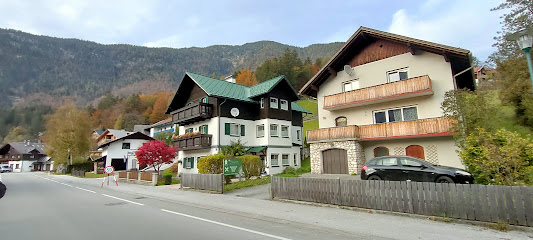
Marktbeisl Zur Ruth
Discover the charm of Marktbeisl Zur Ruth, a delightful coffee shop and restaurant in Hallstatt, serving authentic Austrian cuisine and coffee in a picturesque setting.
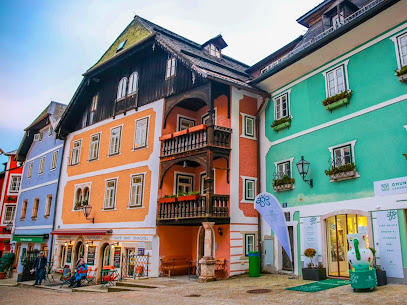
Ofenfrische Schaumrollen
Experience the taste of tradition at Ofenfrische Schaumrollen, a charming bakery in Hallstatt known for its irresistible cream rolls and local pastries.
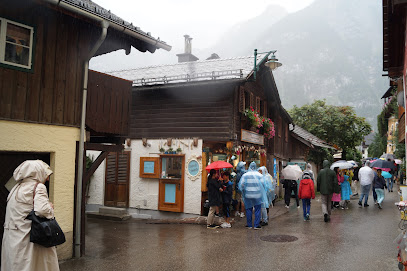
Die Gemischtwarenhandlung
Discover the charm of Hallstatt at Die Gemischtwarenhandlung, where exceptional coffee meets a cozy atmosphere.
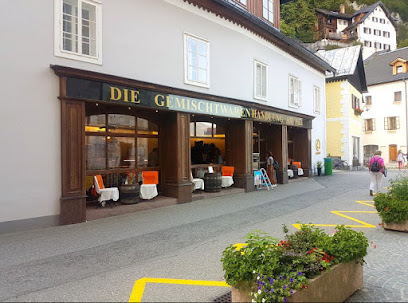
Dachsteinsport Janu
Explore Hallstatt's stunning landscapes with expert gear from Dachsteinsport Janu, your go-to sporting goods store and ski rental service.
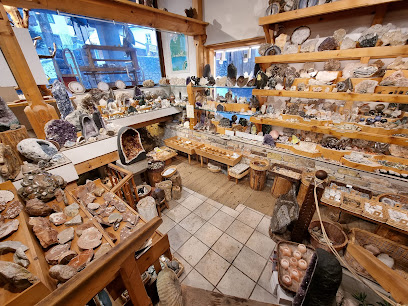
Cafe Bakeries Maislinger
Discover the sweet flavors of Café Bakeries Maislinger in Obertraun, where freshly baked delights await every visitor.
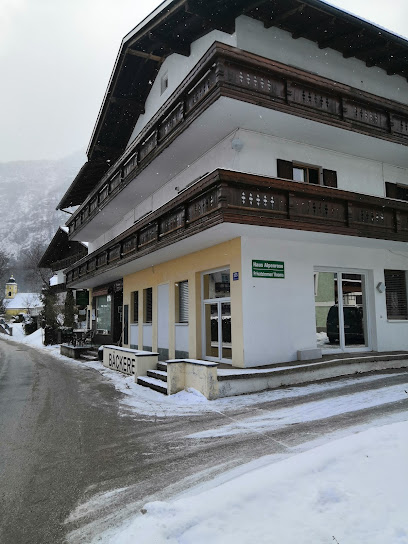
Geschenk's Platzerl
Explore Austrian craftsmanship and find the perfect souvenir at Geschenk's Platzerl in scenic Hallstatt.
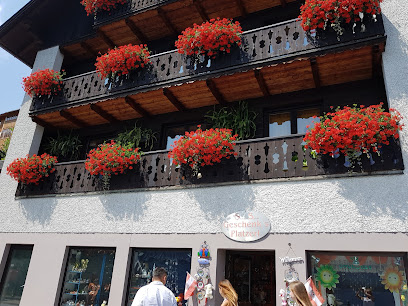
Kurt's Mammut Express
Discover outdoor adventure gear at Kurt's Mammut Express in Obertraun, your go-to store for exploring the breathtaking Dachstein region.
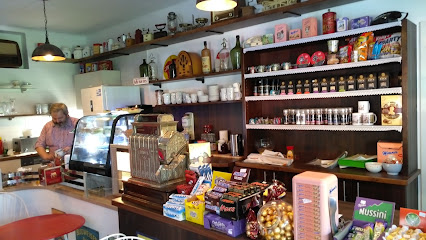
DAS SALZKONTOR - Hallstatt Seestrasse
Discover local treasures and beautiful souvenirs at DAS SALZKONTOR in Hallstatt, a picturesque shop with stunning lake views.
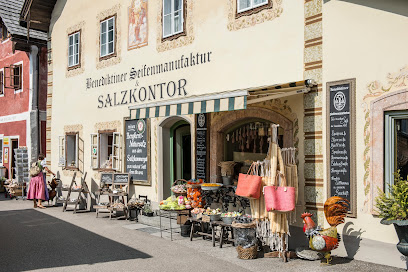
Salzkontor und Benediktiner Seifenmanufaktur
Explore Hallstatt's unique souvenir store, Salzkontor und Benediktiner Seifenmanufaktur, for handcrafted soaps and authentic local treasures.
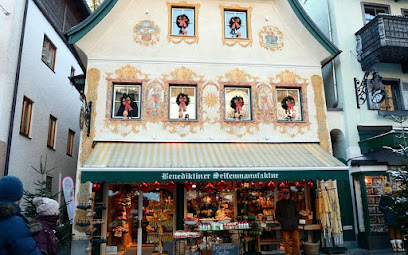
Hallstatt Keramik
Explore Hallstatt Keramik for exquisite handcrafted pottery, capturing the essence of Austria's rich cultural heritage in every piece.

Das Dirndl aus Hallstatt Dirndlschneiderei
Explore the enchanting world of traditional Dirndls in Hallstatt, where craftsmanship meets cultural heritage in every stitch.
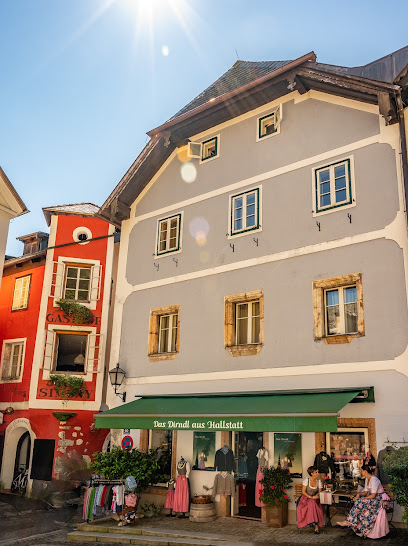
Essential bars & hidden hideouts
Seehotel Grüner Baum
Experience the beauty of Hallstatt at Seehotel Grüner Baum, where luxury meets stunning alpine landscapes.

Bräugasthof
Experience authentic Austrian cuisine at Bräugasthof in Hallstatt, where traditional flavors meet stunning alpine views.

Uferwirt Seeraunzn
Discover the charm of Uferwirt Seeraunzn, a lakeside restaurant offering traditional Austrian cuisine and stunning alpine views.
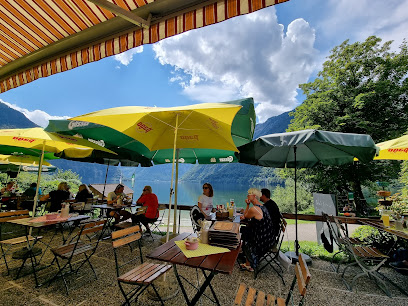
Seecafé Hallstatt
Experience the serene beauty of Hallstatt at Seecafé, where stunning lake views meet delightful local flavors.
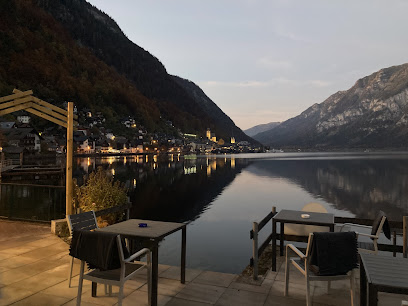
Rudolfsturm
Experience authentic Austrian cuisine with breathtaking views at Rudolfsturm in Hallstatt, a charming restaurant surrounded by nature's beauty.
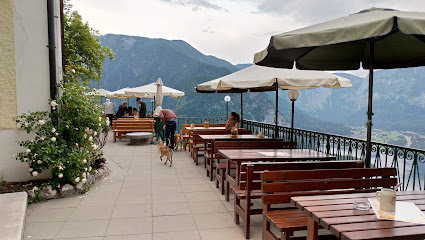
Schirmbar Hallstatt (Umbrella Bar Hallstatt)
Discover the scenic beauty and local flavors at Schirmbar Hallstatt, the perfect lakeside restaurant experience in Austria.
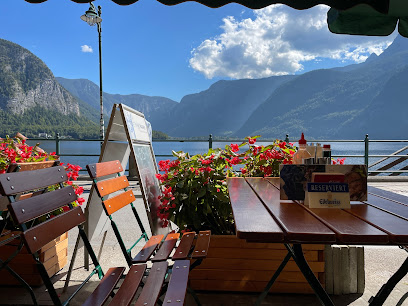
Seewirt - Zauner
Discover the charm of Seewirt - Zauner in Hallstatt, where exquisite dining meets breathtaking lakeside views in an unforgettable Austrian experience.

Burgerman The Station
Discover Burgerman The Station in Hallstatt for gourmet hamburgers and a cozy dining experience amidst stunning alpine scenery.
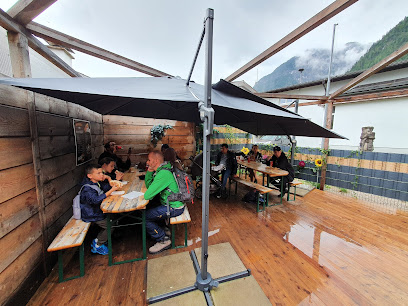
SIMPLE 169
Discover the flavors of Austria at SIMPLE 169, a cozy takeout restaurant in the heart of Hallstatt, perfect for your culinary adventure.
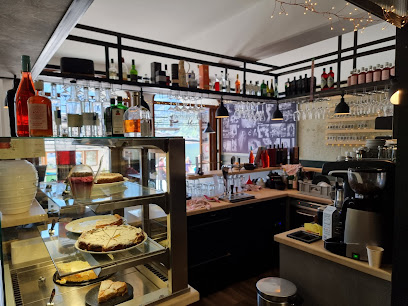
Restaurant am See
Experience the perfect blend of local flavors and stunning lakeside views at Restaurant am See in Hallstatt, Austria.
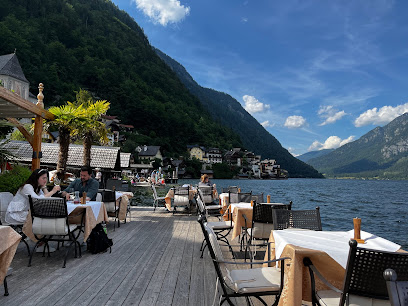
Café Derbl
Discover the charm of Hallstatt at Café Derbl, where delightful pastries and stunning views create an unforgettable experience.
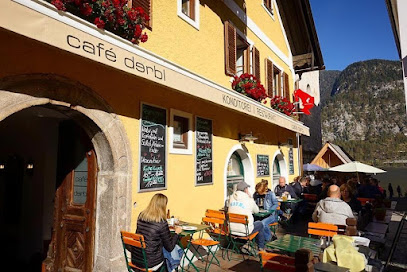
Heritage Cafe & Bar Hallstatt
Discover the charm of Heritage Cafe & Bar in Hallstatt, where local flavors meet stunning alpine views for an unforgettable dining experience.
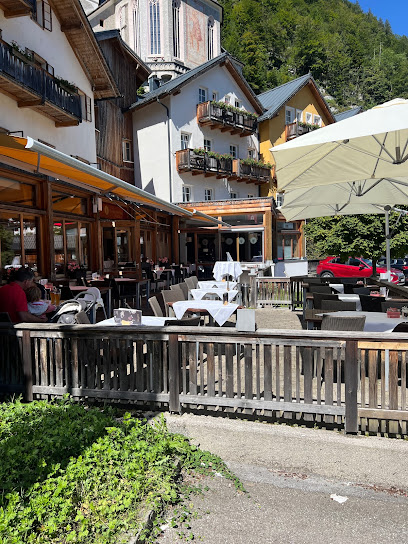
Muk´s Schmankerl
Discover the heart of Austrian cuisine at Muk's Schmankerl, a charming restaurant in Hallstatt, offering delicious local dishes and a warm atmosphere.
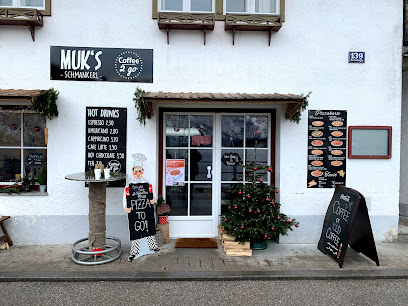
Brauhaus
Experience authentic Austrian cuisine at Brauhaus, nestled in the stunning village of Hallstatt, a UNESCO World Heritage site.
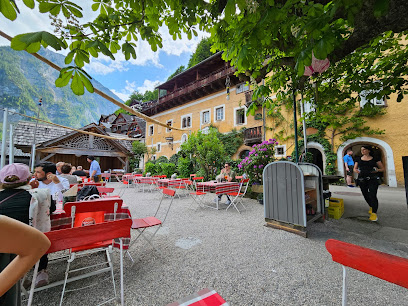
Marktbeisl Zur Ruth
Discover the charm of Marktbeisl Zur Ruth in Hallstatt, where authentic Austrian cuisine meets breathtaking mountain views.
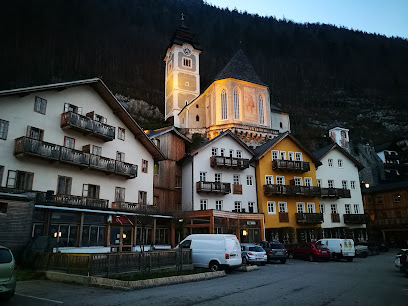
Local Phrases
-
- HelloServus
[ser-voos] - GoodbyeAuf Wiedersehen
[owf vee-der-zay-en] - YesJa
[yah] - NoNein
[nine] - Please/You're welcomeBitte
[bit-te] - Thank youDanke
[dahn-kuh] - Excuse me/SorryEntschuldigung
[ent-shool-di-goong] - How are you?Wie geht's?
[vee gayts] - Fine. And you?Gut. Und dir?
[goot. oont deer] - Do you speak English?Sprechen Sie Englisch?
[shpre-khen zee eng-lish] - I don't understandIch verstehe nicht
[ikh fer-shtay-uh nikht]
- HelloServus
-
- I'd like to see the menu, pleaseIch möchte bitte die Speisekarte sehen
[ikh merkhte bit-te dee shpy-zuh-kahr-teh zay-en] - I don't eat meatIch esse kein Fleisch
[ikh ess-uh kine flysh] - Cheers!Prost!
[prohst] - I would like to pay, pleaseIch möchte bitte zahlen
[ikh merkhte bit-te tsah-len]
- I'd like to see the menu, pleaseIch möchte bitte die Speisekarte sehen
-
- Help!Hilfe!
[hil-fuh] - Go away!Geh weg!
[geh vehg] - Call the Police!Rufen Sie die Polizei!
[roo-fen zee dee po-lee-tsy] - Call a doctor!Rufen Sie einen Arzt!
[roo-fen zee i-nen arts-t] - I'm lostIch bin verloren
[ikh been fer-loh-ren] - I'm illIch bin krank
[ikh been krank]
- Help!Hilfe!
-
- I'd like to buy...Ich möchte ... kaufen
[ikh merkhte ... kow-fen] - I'm just lookingIch schaue nur
[ikh shou-eh noor] - How much is it?Wie viel kostet das?
[vee feel kaws-tet dahs] - That's too expensiveDas ist zu teuer
[dahs ist tsoo toy-er] - Can you lower the price?Können Sie den Preis senken?
[kern-en zee den prees zank-en]
- I'd like to buy...Ich möchte ... kaufen
-
- What time is it?Wie spät ist es?
[vee shpet ist es] - It's one o'clockEs ist ein Uhr
[es ist iyn oor] - Half past (10)Halb zehn
[halb tsayn] - MorningMorgen
[mohr-ghen] - AfternoonNachmittag
[nahk-mit-tahk] - EveningAbend
[ah-bent] - YesterdayGestern
[ges-tern] - TodayHeute
[hoi-teh] - TomorrowMorgen
[mohr-ghen] - 1Eins
[iyns] - 2Zwei
[tsvai] - 3Drei
[dray] - 4Vier
[feer] - 5Fünf
[foonsf] - 6Sechs
[zeks] - 7Sieben
[zee-ben] - 8Acht
[ahkt] - 9Neun
[noyn] - 10Zehn
[tsayn]
- What time is it?Wie spät ist es?
-
- Where's a/the...?Wo ist ein/der...?
[voh ist iyn/dehr] - What's the address?Was ist die Adresse?
[vas ist dee ah-dreh-suh] - Can you show me (on the map)?Können Sie mir zeigen (auf der Karte)?
[kern-en zee meer tsay-gen (owf dehr kahr-teh)] - When's the next (bus)?Wann kommt der nächste (Bus)?
[vahn kohmt dehr nyekhs-teh (boos)] - A ticket (to ....)Eine Fahrkarte (nach ....)
[iyn-uh fahr-kahr-teh (nahkh ....)]
- Where's a/the...?Wo ist ein/der...?
History of Hallstatt
-
Hallstatt's history dates back to the prehistoric era, with evidence of human settlement as early as the Neolithic period. Archaeological findings in the region have uncovered tools, pottery, and remnants of ancient dwellings, indicating that the area was inhabited over 7,000 years ago. The rich natural resources, particularly salt, played a significant role in attracting early settlers.
-
The Hallstatt period, named after this very town, marks a significant era in European prehistory, roughly spanning from 800 to 450 BC. During this time, the region became a major center for salt mining, which was a highly valued commodity. The wealth generated from salt trade led to the development of a distinctive culture characterized by advanced metalwork, elaborate burial rites, and intricate art forms. Numerous burial sites and artifacts from this era have been discovered, offering a glimpse into the life and social structures of the Hallstatt people.
-
The Roman Empire extended its reach into the Hallstatt region around 15 BC. Under Roman rule, Hallstatt became part of the province of Noricum. The Romans were keen to exploit the area's rich salt resources, and they established infrastructures such as roads and settlements to facilitate trade and extraction. The influence of Roman culture and technology can be seen in the remnants of buildings, inscriptions, and artifacts found in the area.
-
Following the decline of the Roman Empire, Hallstatt experienced a period of relative obscurity. However, during the medieval period, the town began to flourish once again. The construction of the Hallstatt Lutheran Church in the 12th century and the establishment of various salt mines marked this era. The medieval town developed around these mines, and Hallstatt's picturesque architecture began to take shape, with narrow streets and Alpine-style houses that still stand today.
-
The 16th to 18th centuries saw a significant boom in the salt trade, bringing considerable prosperity to Hallstatt. The town's salt mines were among the most productive in Europe, and the wealth generated led to the construction of grand buildings and the expansion of the town. This period also saw advancements in mining technology and methods, which further boosted production. The job opportunities and economic growth attracted workers and settlers, contributing to the town's development.
-
In the 19th century, Hallstatt began to gain recognition as a tourist destination, thanks in part to its stunning natural beauty and historical significance. The invention of photography and the spread of travel literature introduced Hallstatt to a broader audience. The town's unique charm and picturesque setting have made it a popular destination for travelers from around the world. Hallstatt has been designated a UNESCO World Heritage Site, ensuring the preservation of its rich history and cultural heritage for future generations.
Hallstatt Essentials
-
Hallstatt is located in the Salzkammergut region of Austria. The nearest international airport is Salzburg Airport, approximately 80 kilometers away. From Salzburg, you can take a train to Hallstatt, which involves a transfer at Attnang-Puchheim. The train journey takes around 2.5 hours. Alternatively, you can drive from Salzburg, which takes about 1.5 hours. Another option is to take a bus from Salzburg to Bad Ischl and then transfer to a local bus or train to Hallstatt.
-
Hallstatt is a small village, and most attractions are within walking distance. For longer trips, local buses connect Hallstatt to nearby towns and villages. Boats also operate on Hallstätter See, offering scenic routes to various points around the lake. While cars are allowed, the village has limited parking spaces, so it's advisable to use public transportation or park in designated areas outside the village and take a shuttle bus.
-
The official currency in Austria is the Euro (EUR). Credit cards are widely accepted in hotels, restaurants, and shops in Hallstatt. However, it is advisable to carry some cash for smaller establishments, local markets, and public transportation. ATMs are available in the village for cash withdrawals.
-
Hallstatt is generally a very safe destination for tourists. Crime rates are low, and violent crime is rare. However, like any tourist destination, it's important to take standard precautions. Keep an eye on your belongings in crowded areas and avoid leaving valuables unattended. There are no specific high-crime areas targeting tourists in Hallstatt.
-
In case of emergency, dial 112 for immediate assistance. The local police station and medical facilities are available in Hallstatt. It is recommended to have travel insurance that covers medical emergencies. For minor health issues, there is a pharmacy in the village where you can purchase over-the-counter medications.
-
Fashion: Do dress comfortably and appropriately for the weather. Avoid overly casual or revealing clothing, especially when visiting religious sites. Religion: Do respect local customs and traditions. Be quiet and respectful when visiting churches. Public Transport: Do validate your ticket before boarding. Don't be loud or disruptive on public transport. Greetings: Do greet people with a friendly 'Grüß Gott' or 'Hallo.' A handshake is common in formal settings. Eating & Drinking: Do try local specialties like 'Kaiserschmarrn' and 'Austrian schnitzel.' Don't leave a small tip; rounding up the bill is common practice.
-
To experience Hallstatt like a local, take a leisurely stroll around the village early in the morning to avoid tourist crowds. Visit the local market for fresh produce and traditional Austrian goods. Engage with locals, as they are friendly and happy to share stories about Hallstatt's history and culture. Don't miss the Hallstatt Salt Mine tour, which offers a fascinating glimpse into the village's ancient salt mining heritage. For a unique experience, take a boat ride on Hallstätter See for stunning views of the village from the water.
Trending Landmark in Hallstatt
-
Panoramic Viewpoint - Hallstatt
-
Panoramic Viewpoint - Hallstatt Skywalk
-
Salzwelten Hallstatt
-
Hallstätter See
-
World Heritage Spiral (Welterbespirale)
-
Rudolfsturm
-
Evangelische Pfarrkirche Hallstatt
-
Marktplatz Hallstatt
-
Pfarrkirche Mariä Himmelfahrt (Maria am Berg)
-
Salzbergbahn
-
Tourism Office Hallstatt - Dachstein Salzkammergut
-
Hallstatt Skywalk - Hallstättersee
-
Welterbemuseum Hallstatt
-
Mammut Cave
-
Hallstätter Wasserfall
Nearby Cities to Hallstatt
-
Things To Do in Salzburg
-
Things To Do in Bad Gastein
-
Things To Do in Zell am See
-
Things To Do in Kitzbühel
-
Things To Do in Linz
-
Things To Do in Klagenfurt
-
Things To Do in Kranjska Gora
-
Things To Do in Bled
-
Things To Do in Bohinj
-
Things To Do in Graz
-
Things To Do in Český Krumlov
-
Things To Do in Škofja Loka
-
Things To Do in Kamnik
-
Things To Do in Munich
-
Things To Do in České Budějovice













